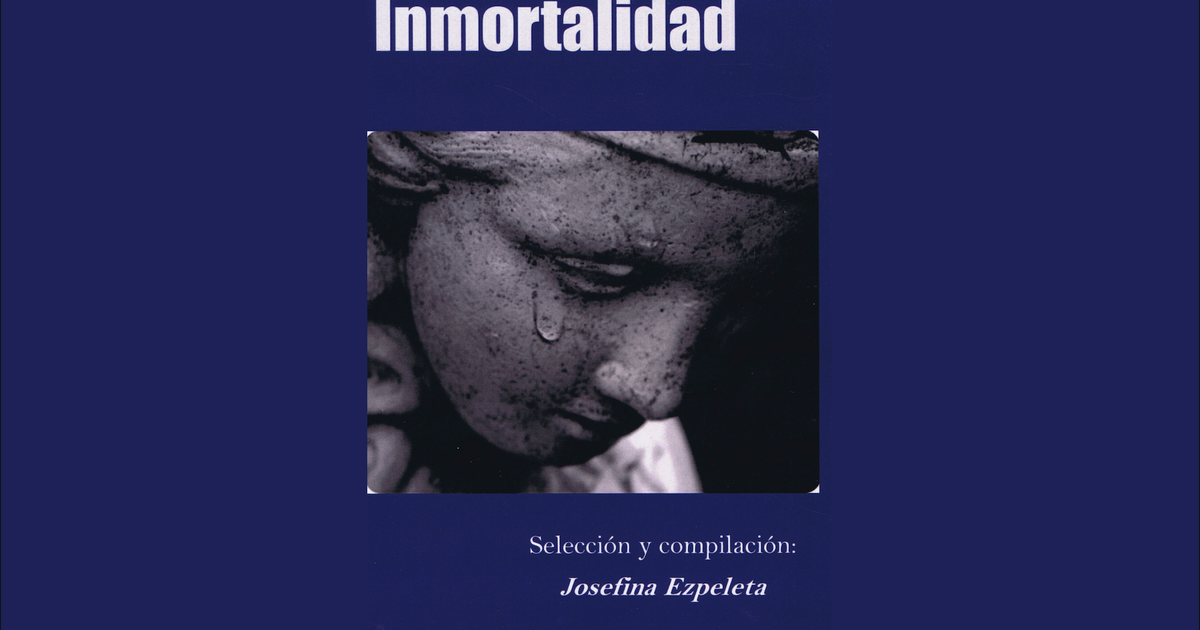The writer and editor Josefina Ezpeleta conceived the idea of a book where poets and storytellers wrote about the impression made on them by a work of sculptural art that they put up for consideration for evaluation.
In this way it arises Immortality (2023) where 30 writers approach the works that Ezpeleta selected according to his taste and that he put in the hands of these authors so that “a symbiosis between the two arts, sculpture and literature, nuanced by different experiences, emerges. sensitivities, ages and life experiences of each of them.”
According to the anthologist, who selected and compiled the pieces and literary texts, the primary purpose was to pay a small tribute “to the beautiful discipline of Fine Arts.”
The book is structured in two sections. In one the stories appear, and in another, somewhat longer, the poems. However, the selected pieces require a particular look, many of them little known. Sculptures scattered around the world that Josefina Ezpeleta’s sensitivity preferred to distinguish. Therefore there is an essential, primary merit in this book, and they are the figures that he wisely chose, then put in the hands of the writers that he invited to participate in his book and that once the editing process was completed, he printed in colors, so each sculpture stands out even more.
It is not clear if the selected works were discovered and photographed by the anthologist over the years and travels, or if they are pieces that have impacted her and she selected to her liking. Either way that’s not important. The great thing lies in Ezpeleta’s artistic eye and in the worldview of each poet and narrator who values her artistically.
In some of the texts what they see is described; In others, the authors develop ideas from the image and in some cases an emotional communion is created between sculpture and poem, between sculpture and story.
About the work Take the risk of Nicolas Lavarenne, the poet Alex Schweg writes briefly but intensely: “The foot on the rope of the horizon. Man will balance where the sky and the sea come together in inviolable harmony, blue of eternal vastness. He will walk on the invisible thread that we will ever cross… ”. The above is a good example of the tone of the book and the proximity of the author.
It is worth mentioning that the photo of each sculpture is accompanied by information about its creator and location, which helps the reader establish a closer contact with the work and search for more about the artist. However, there is no particular information about the poets and narrators, which reaffirms that the primary conception of the book focuses on the sculptures.
The texts of Manuel Vázquez Portal, Joaquín Gálvez, Uva de Aragón, Juan C. Recio, Franky de Varona, Rolando Lorié, Adaliz de León, Pablo Socorro, Efraín Riverón and Maite Glaría make themselves felt, just to mention some of the 30 collaborators .
Of the sculptures, the one by Jerzy Kalina, which is in Warsaw, stands out; that of Paige Bradley, located in a private collection in New York; that of Bruno Catalano, in Marseille, France; the one sculpted by Jaume Barba, located in a cemetery in Barcelona; as well as those of Chong Fah Cheong, in Singapore and that of Lorenzo Quinn, on the Grand Canal in Venice.
There is no other way to approach Immortality than holding it in your hands and letting the images and words flow pleasantly through your eyes.


